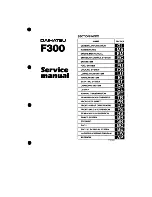
Useful information
i
This Operator's Manual describes all
models and all standard and optional
equipment of your vehicle available at the
time of publication of the Operator's
Manual. Country-specific differences are
possible. Please note that your vehicle may
not be equipped with all features
described. This also applies to safety-
related systems and functions.
i
Please read the information on qualified
specialist workshops (
Y
page 31).
Breaking-in notes
The first 1,000miles (1,500 km)
The more you look after the engine when it is
new, the more satisfied you will be with its
performance in the future.
R
You should therefore drive at varying
vehicle and engine speeds for the first
1,000miles (1,500km).
R
Avoid heavy loads, e.g. driving at full
throttle, during this period.
R
Change gear in good time, before the
tachometer needle is
Ô
of the way to the
red area of the tachometer.
R
Do not manually shift to a lower gear to
brake the vehicle.
R
If possible, do not depress the accelerator
pedal past the point of resistance
(kickdown).
R
Only select shift ranges 3, 2 or 1 when
driving slowly, e.g. in mountainous terrain.
R
If possible, for the first 1,000miles
(1,500km), drive in drive program E (in
AMG vehicles in drive program C).
After 1,000 miles (1,500km), you can
increase the engine speed gradually and bring
the vehicle up to full speed.
Additional breaking-in notes for AMG
vehicles:
R
do not drive faster than 85 mph
(140 km/h) for the first 1,000 miles
(1,500 km).
R
only allow the engine to reach a maximum
engine speed of 4,500 rpm briefly.
R
change gear in good time.
i
You should also observe these breaking-
in notes if the engine or parts of the drive
train on your vehicle have been replaced.
i
Always observe the respective speed
limits.
Driving
Important safety notes
G
WARNING
Make sure absolutely no objects are
obstructing the pedals' range of movement.
Keep the driver's footwell clear of all
obstacles. If there are any floormats or
carpets in the footwell, make sure the pedals
still have sufficient clearance.
During sudden driving or braking maneuvers
the objects could get caught between the
pedals. You could then no longer brake or
accelerate. This could lead to accidents and
injury.
G
WARNING
On slippery road surfaces, never downshift in
order to obtain braking action. This could
result in drive wheel slip and reduced vehicle
control. Your vehicle's ABS will not prevent
this type of loss of control.
G
WARNING
It is dangerous to shift the automatic
transmission out of parking position P or
neutral position N if the engine speed is
higher than idle speed. If your foot is not firmly
on the brake pedal, the vehicle could
accelerate quickly forward or in reverse. You
306
Driving
Driving
and
parking
















































